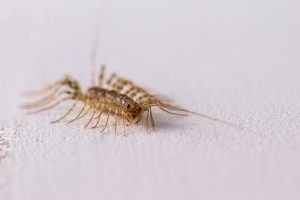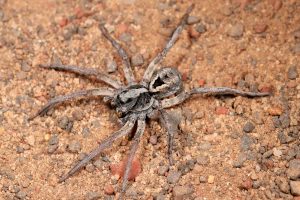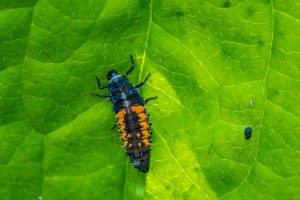Arthropods, or invertebrates with a segmented body and exoskeleton, make up more than 80 percent of known species on Earth. Spiders, insects, centipedes, and even crabs are all arthropods, and arthropods can be found on all seven continents, and even in your own home! While they may be frightening at first, many are harmless or even beneficial to humans.
House Centipede
 House centipedes, as their name suggests, can often be found in homes. They typically have 30 legs and are nocturnal, so you’ll likely only see them at night. Even then, centipedes, as well as many other arthropods, prefer to stay hidden and away from larger animals such as people. House centipedes are carnivores, eating pests such as cockroaches, silverfish, and carpet beetle larvae. While centipedes can bite, they will only do so in self-defense.
House centipedes, as their name suggests, can often be found in homes. They typically have 30 legs and are nocturnal, so you’ll likely only see them at night. Even then, centipedes, as well as many other arthropods, prefer to stay hidden and away from larger animals such as people. House centipedes are carnivores, eating pests such as cockroaches, silverfish, and carpet beetle larvae. While centipedes can bite, they will only do so in self-defense.
Wolf Spider
 Wolf spiders are large, brown arachnids and are part of a group that includes spiders, scorpions, and other eight-legged arthropods. Unlike many spiders, wolf spiders don’t spin webs, instead actively hunting and catching prey such as roaches, crickets, and other insects. Female wolf spiders also carry and protect their young until they’re old enough to fend for themselves. Wolf spiders are often confused with the venomous brown recluse spider. However, wolf spiders are much larger, hairier, and more common than the brown recluse and most importantly, wolf spiders are not venomous to humans.
Wolf spiders are large, brown arachnids and are part of a group that includes spiders, scorpions, and other eight-legged arthropods. Unlike many spiders, wolf spiders don’t spin webs, instead actively hunting and catching prey such as roaches, crickets, and other insects. Female wolf spiders also carry and protect their young until they’re old enough to fend for themselves. Wolf spiders are often confused with the venomous brown recluse spider. However, wolf spiders are much larger, hairier, and more common than the brown recluse and most importantly, wolf spiders are not venomous to humans.
Ladybug Larvae
 Ladybug larvae look very little like their adult forms. In fact, they look more like spiky black caterpillars than the familiar red and black-spotted beetles. Unlike caterpillars, though, ladybugs and their larvae are mostly carnivores, with swarms of aphids as their favorite prey. Aphids suck sap from plants, damaging the plants if aphid swarms are large enough. Ladybugs are a gardener’s best friend, with adults and their larvae eating thousands of aphids in their lifetime. Note that ladybugs available to purchase as pest control are often non-native species and aren’t guaranteed to stay in your garden. The best way to attract and keep ladybugs is by providing plants for pollen (an occasional, nutritious food source), shelter, and a place to lay eggs.
Ladybug larvae look very little like their adult forms. In fact, they look more like spiky black caterpillars than the familiar red and black-spotted beetles. Unlike caterpillars, though, ladybugs and their larvae are mostly carnivores, with swarms of aphids as their favorite prey. Aphids suck sap from plants, damaging the plants if aphid swarms are large enough. Ladybugs are a gardener’s best friend, with adults and their larvae eating thousands of aphids in their lifetime. Note that ladybugs available to purchase as pest control are often non-native species and aren’t guaranteed to stay in your garden. The best way to attract and keep ladybugs is by providing plants for pollen (an occasional, nutritious food source), shelter, and a place to lay eggs.
Instead of squashing bugs or using pesticides, consider sealing cracks and other access points leading into your house to keep unwanted visitors out. When animals do sting, bite, or emit a foul stench, it’s just to protect themselves! The old adage of them being more scared of you than you are of them is true. Give insects and other arthropods some space, and they’ll be very grateful.



